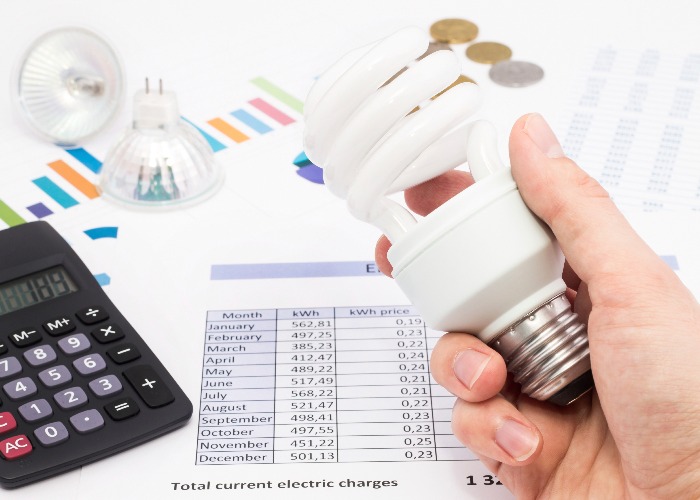Green energy deals: action to be taken on ‘greenwashing’ tariffs

Signing up to a ‘green’ energy tariff may not be quite as environmentally friendly as you expect.
There are all sorts of different elements that go into picking an energy tariff.
In some cases, you may be limited by geography ‒ you might really want to sign up with a particular supplier, but they aren’t active in your area.
Previous experience with a supplier will play a part too.
If you’ve had a shocking time with British Gas in the past, for example, you might not be so keen to sign up to one of their deals, no matter how competitive it may appear.
And then of course there’s the price.
After all, for many of us, the main point of shopping around for an energy tariff is to pay as little as possible.
However, another important factor for a significant number of households will be where the energy is coming from.
Millions of us have signed up to tariffs that are apparently environmentally friendly, yet the Government has now announced that it is taking action on the fact that in too many cases this isn’t really true.
Want to save on your energy bills but put off by the switching process? Our step-by-step guide to moving to a cheaper deal is here to help!
Going green
It would seem that there is a real appetite among British households to try to be more energy efficient when it comes to heating our homes.
According to the Government’s own research, there are currently around nine million households on ‘green’ energy tariffs.
Now sure, in some cases that will just be because that household has shopped around for the cheapest deal they could find and happened upon a green tariff.
But equally, there will be plenty of people who have chosen that tariff at least in part because of its vaunted green credentials.
Which is why it’s so troubling that, in some cases, we are being hoodwinked by what is effectively a marketing trick.
Not so green
There are real concerns across the industry about ‘greenwashing’.
This is where an energy supplier can present their tariff as being a green option when really its green credentials are somewhat dubious.
Suppliers can market their tariff as green if they purchase certificates called Renewable Energy Guarantees of Origin to offset the energy from the tariff that comes from fossil fuels. These certificates are given to renewable energy suppliers by Ofgem, but they can then be sold to normal energy suppliers.
The thinking is that as the normal energy supplier is paying for them, and handing that money to a renewable supplier, it counteracts the fact that some of the energy used is coming from non-renewable sources.
The issue is that the cost of these certificates is pretty tiny, with some experts in the industry arguing they only set back the main energy supplier around 15p per megawatt hour.
Essentially, rather than providing transparency to us over where the energy we use is coming from, suppliers are able to game the system, use fossil fuels to power their tariffs, yet advertise them as green by doing little more than making a modest donation to a renewable energy generator.
Tackling greenwashing
Thankfully, the Government has recognised that this situation is daft and cannot continue, pledging to review the existing system.
As part of the new consultation, the Government has called for views on whether the certificate system can be made smarter, as well as to what extent suppliers need to provide clearer information to their customers about green tariffs, including the type of renewable energy used, where it was generated, and when.
This strikes me as an obvious fix. Ultimately, what’s going on at the moment is mis-selling ‒ we are being sold tariffs that are not as they appear. And if it is all above board, as seems to be the case at the moment, then those rules need to be changed as soon as possible.
Some have called for the certificates to be scrapped entirely, as in their current form they merely invite this level of abuse.
I’m not sure about that personally ‒ it’s not the certificates that are at fault here, but the suppliers who have spotted a sneaky way to appeal to the environmentally-conscious without actually having to really do anything differently.
Can I tell how green my energy supplier is?
Different suppliers will employ different levels of transparency about just where the energy they supply is coming from.
It’s telling that Good Energy and Scottish Power have been two of the loudest critics of the current greenwashing situation since they are confident in their own green credentials and the fact that their green tariffs live up to the name.
Ultimately, it still comes down to us as individual consumers to have to do that homework and ensure that the green tariff that has caught our eye really lives up to its billing, at least until the Government follows up its apparent good intentions with some actual action.
Comments
Be the first to comment
Do you want to comment on this article? You need to be signed in for this feature